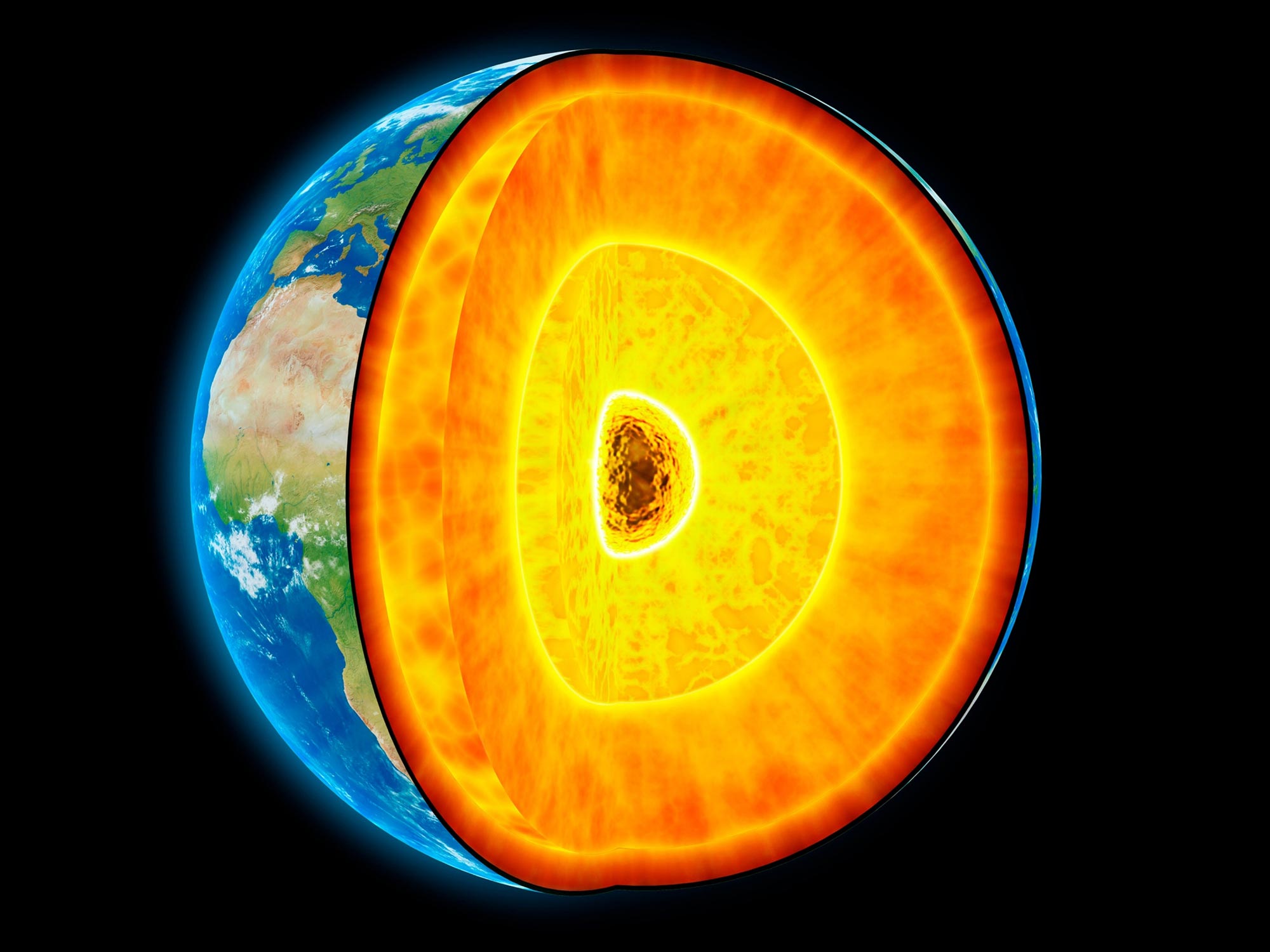
La variation d’une seconde du temps de parcours d’un groupe d’ondes sismiques nous donne un aperçu important et sans précédent de ce qui se passe au plus profond de la Terre.
La théorie soutient notre compréhension de la convection dans le noyau externe de la Terre et sa fonction dans le contrôle du champ magnétique de la planète. Les scientifiques n’ont pas observé directement les flux convectifs ou comment ils pourraient changer. Le géologue de Virginia Tech, Ying Zhou, fournit des preuves pour la première fois.
Un tremblement de terre majeur a secoué la région des îles Kermadec du Pacifique Sud en mai 1997. Un peu plus de 20 ans plus tard, en septembre 2018, un deuxième tremblement de terre majeur a frappé le même endroit, avec ses vagues d’énergie sismique émanant de la même région.
Bien que deux décennies de sismicité aient séparé les tremblements de terre, parce qu’ils se sont produits dans la même région, on s’attendrait à ce qu’ils envoient des ondes sismiques à travers les couches de la Terre à la même vitesse, a déclaré Ying Zhou, géologue au Département des sciences de la Terre de Virginia Tech. Les sciences.

Le chemin bleu montre une onde sismique pénétrant dans le noyau se déplaçant à travers une région du noyau externe, où la vitesse sismique a augmenté en raison de la transmission d’un flux de faible intensité dans la région. Crédit : Ying Zhou de Virginia Tech
Cependant, dans les données enregistrées dans quatre des plus de 150 stations du réseau sismique mondial qui enregistrent les vibrations sismiques en temps réel, Zhou a trouvé des anomalies surprenantes entre les événements jumeaux. Lors du tremblement de terre de 2018, un groupe d’ondes sismiques appelées ondes SKS s’est déplacée environ une seconde plus vite que leurs homologues de 1997.
Selon Zhou, dont les résultats ont été récemment publiés dans
Blue lines are seismic rays in the outer core, where core-penetrating seismic waves moved through that region faster in 2018 than in 1997. Credit: Image courtesy of Ying Zhou
Scientists also have only been able to speculate about the source of gradual changes in strength and direction of the magnetic field that have been observed, which likely involves changing flows in the outer core.
“If you look at the north geomagnetic pole, it’s currently moving at a speed of about 50 kilometers (31 miles) per year,” Zhou said. “It’s moving away from Canada and toward Siberia. The magnetic field is not the same every day. It’s changing. Since it’s changing, we also speculate that convection in the outer core is changing with time, but there’s no direct evidence. We’ve never seen it.”
Zhou set out to find that evidence. The changes happening in the outer core aren’t dramatic, she said, but they’re worth confirming and fundamentally understanding. In seismic waves and their changes in speed on a decade time scale, Zhou saw a means for “direct sampling” of the outer core. That’s because the SKS waves she studied pass right through it.
“SKS” represents three phases of the wave: First it goes through the mantle as an S wave, or shear wave; then into the outer core as a compressional wave; then back out through the mantle as an S wave. How fast these waves travel depend in part on the density of the outer core that’s in their path. If the density is lower in a region of the outer core as the wave penetrates it, the wave will travel faster, just as the anomalous SKS waves did in 2018.
“Something has changed along the path of that wave, so it can go faster now,” Zhou said.
To Zhou, the difference in wave speed points to low-density regions forming in the outer core in the 20 years since the 1997 earthquake. That higher SKS wave speed during the 2018 earthquake can be attributed to the release of light elements such as hydrogen, carbon, and oxygen in the outer core during convection that takes place as the Earth cools, she said.
“The material that was there 20 years ago is no longer there,” Zhou said. “This is new material, and it’s lighter. These light elements will move upward and change the density in the region where they’re located.”
To Zhou, it’s evidence that movement really is happening in the core, and it’s changing over time, as scientists have theorized. “We’re able to see it now,” she said. “If we’re able to see it from seismic waves, in the future, we could set up seismic stations and monitor that flow.”
What’s next
That’s Zhou’s next effort. Using a method of wave measurement known as interferometry, her team plans to analyze continuous seismic recordings from two seismic stations, one of which will serve as a “virtual” earthquake source, she said.
“We can use earthquakes, but the limitation of relying on earthquake data is that we can’t really control the locations of the earthquakes,” Zhou said. “But we can control the locations of seismic stations. We can put the stations anywhere we want them to be, with the wave path from one station to the other station going through the outer core. If we monitor that over time, then we can see how core-penetrating seismic waves between those two stations change. With that, we will be better able to see the movement of fluid in the outer core with time.”
Reference: “Transient variation in seismic wave speed points to fast fluid movement in the Earth’s outer core” by Ying Zhou, 25 April 2022, Communications Earth & Environment.
DOI: 10.1038/s43247-022-00432-7









More Stories
Compenser le sommeil le week-end pourrait réduire d’un cinquième le risque de maladie cardiaque – étude | Maladie cardiaque
Une vache marine préhistorique a été mangée par un crocodile et un requin, selon des fossiles
Un cas de varicelle a été signalé à la prison du comté de Las Vegas